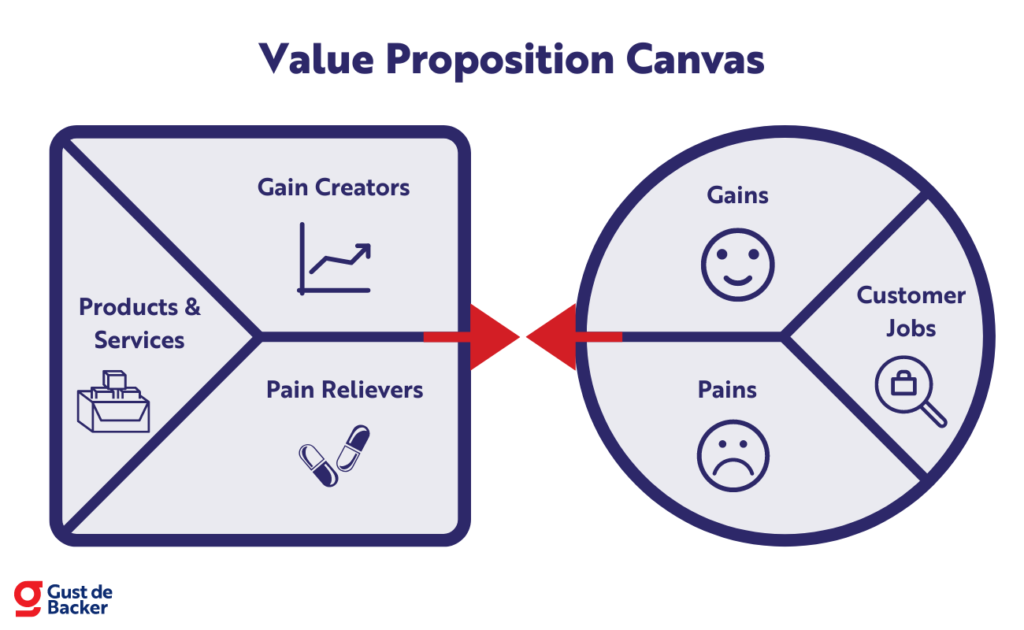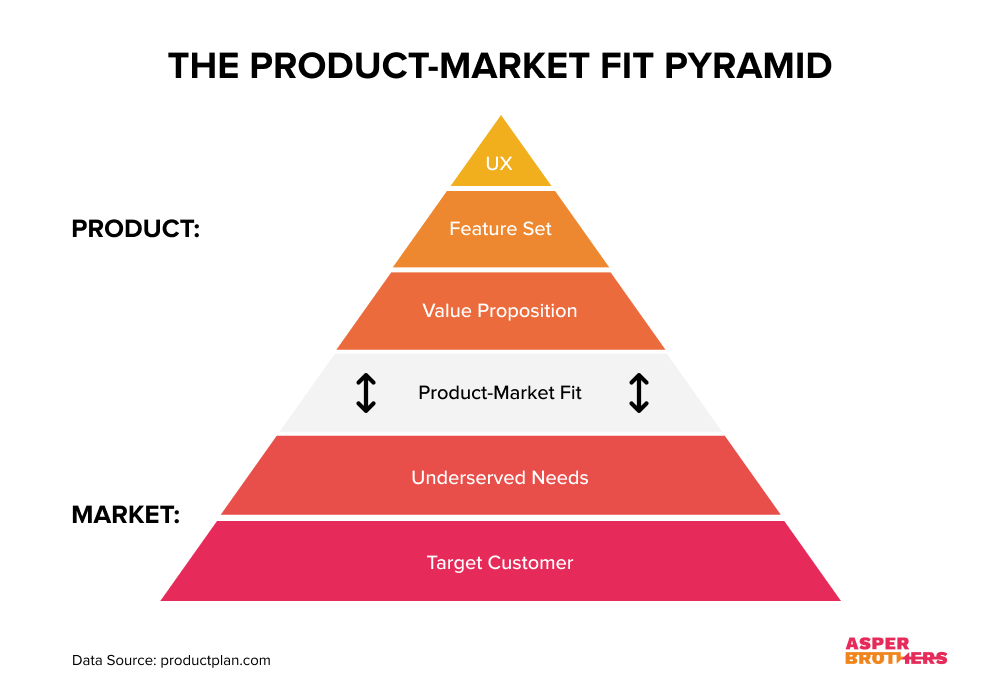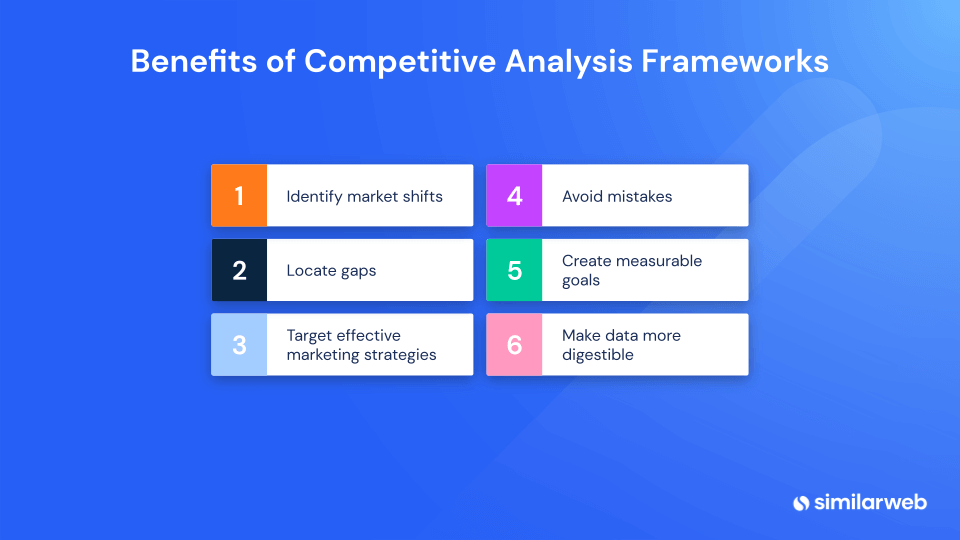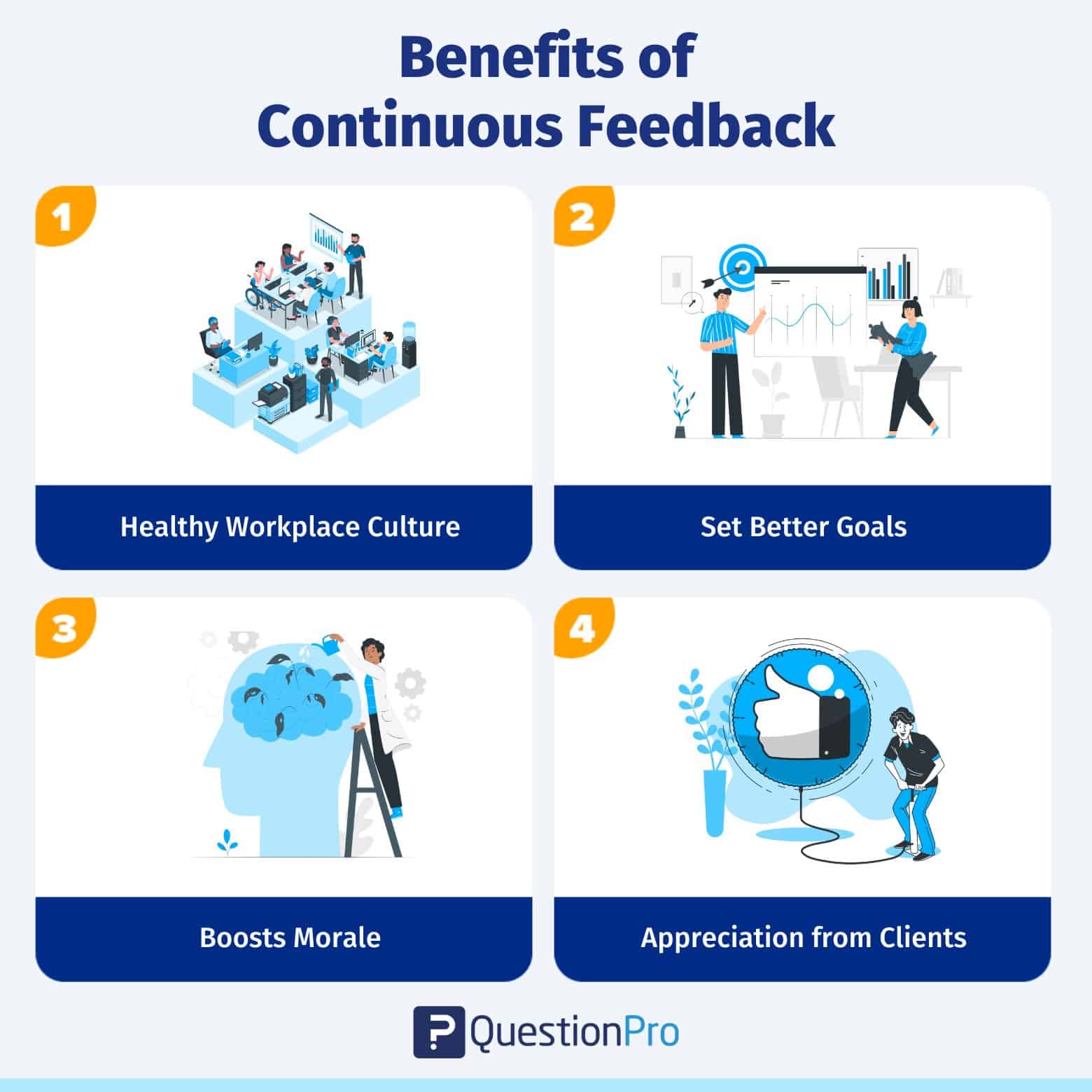Imagine having the ability to align your product perfectly with market demand, driving exponential growth and market dominance. This is exactly what Uber managed to achieve, turning a simple idea into a global powerhouse. But how did they do it?
In this blog post, we’ll take you on a deep dive into Uber’s journey towards product-market fit, uncovering the strategies, iterative processes, and tactical decisions that propelled them to the top. Whether you’re struggling to find your market or looking to refine your product offering, the insights from Uber’s success can provide the blueprint you need to crack the code and achieve lasting market success.
- Understanding the Essence of Product-Market Fit: Achieving product-market fit is crucial for business success, as illustrated by Uber’s strategic journey.
- Strategic Approach: Uber’s method of testing and validating product-market fit through iterative processes and customer feedback can serve as a model for other businesses.
- Value Proposition Development: A compelling value proposition, like Uber’s, is essential to clearly communicate the benefits of your product to the target audience.
- Targeted Launch Strategy: Uber’s focused go-to-market strategy, starting in specific cities before expanding, highlights the importance of localisation and building momentum.
- Iterative Testing for Continuous Improvement: Continuous testing and adaptation, as demonstrated by Uber, are key to maintaining and enhancing product-market fit.
- Overcoming Market Challenges: Flexibility and responsiveness to market challenges are critical, as shown by Uber’s ability to adapt and thrive in diverse environments.
How did Uber identify market gaps to achieve product-market fit?
You’ve likely hailed an Uber at least once in your life, but have you ever stopped to consider how this ride-hailing giant became such a dominant force in the transportation sector? Their story isn’t just about a savvy app; it’s about understanding and achieving a perfect product-market fit.
How Uber Achieved Product-Market Fit:
- Identifying a Gap: Uber recognised a glaring gap in the transportation market. Traditional taxis were often unreliable and lacked transparency in pricing. Enter Uber, with its promise of convenience at the tap of a button.
- Uber Value Proposition: The Uber value proposition wasn’t just about hailing a ride; it was about reliability, safety, and affordability.
- Iterative Approach: Uber didn’t rest on its laurels. They continuously sought customer feedback, leading to service enhancements like UberPOOL and UberEATS. This commitment to innovation and adaptation is a lesson for all businesses.

The Role of Innovation and Customer Feedback:
- Stay Ahead: In today’s fast-paced world, resting on initial success isn’t an option. Uber’s continuous innovation, from introducing new ride options to venturing into food delivery, kept them ahead of the curve.
- Feedback is Gold: Uber’s emphasis on customer feedback wasn’t just about addressing complaints; it was about understanding market demand and refining their business model.

Uber’s journey exemplifies a strategic approach to achieving and maintaining product-market fit. By identifying a significant market gap and crafting a compelling value proposition, they positioned themselves as a reliable, safe, and affordable solution. Their iterative approach, driven by constant customer feedback, ensured they stayed ahead of competitors and continuously met market demands.
This narrative not only highlights the importance of a robust Uber product strategy but also serves as a blueprint for other businesses aiming to achieve B2B product market fit. Through the implementation of an effective Uber launch strategy and maintaining an innovative edge, businesses can emulate Uber’s success and establish a lasting presence in their respective markets.
By following a structured product-market fit framework, businesses can navigate the complexities of market demands and customer expectations. Understanding the intricacies of such frameworks and applying them to real-world scenarios is crucial for any company aiming to achieve and sustain a perfect product-market fit.
What Matters Most?
From our experience, defining your positioning early is paramount, as clear messaging allows the true strengths of your product to shine, revealing where it fits best in the market. Clients often discover that product-market fit is not a one-time achievement but a dynamic process that evolves as you continuously iterate based on deep customer feedback. Typically, the most significant insights come from engaging directly with customers to uncover hidden needs, leading to pivotal adjustments that refine your product’s market alignment over time.Get In Touch
What does the 40% rule mean for measuring product-market fit?
You’ve probably heard of the 40% rule in the context of product-market fit, but what does it truly signify? Let’s demystify this concept for you.
Defining the 40% Rule: At its core, the 40% rule serves as a benchmark. If over 40% of your users state they’d be genuinely disappointed without your product, you’re on the right track. This benchmark indicates your product’s indispensability in their lives.
Measuring and Interpreting: To gauge this, surveys are your best friend. Ask your users how they’d feel without your product. If you’re hitting that 40% mark or above, celebrate! But remember, it’s not just about reaching that number; it’s about maintaining and improving it. Regularly check in with your users and adapt based on their feedback.
Implications for Development: Achieving this benchmark isn’t the end. It’s a sign that you need to double down on what’s working and continuously innovate. Keep your ear to the ground, listen to your users, and iterate.
Frameworks for Product-Market Fit: Navigating the Maze
With so many frameworks available, how do you choose the right one for your business? Let’s explore some popular options and their applications.
The Product-Market Fit Pyramid: This framework breaks down product-market fit into five layers, starting from the target audience at the base and culminating in the product at the top. By understanding and defining each layer, you can ensure your product aligns perfectly with market demand.
Lean Startup Methodology: Emphasising agility, this approach encourages startups to build a minimum viable product (MVP), measure its success in the market, and learn from the results. It’s all about rapid iteration and adapting to customer needs.
Customisation is Key: No two businesses are the same. While these frameworks provide a solid foundation, it’s crucial to tailor them to your industry’s nuances. Regularly review and adjust your approach to stay aligned with your market.

How can competitive analysis enhance my product’s market differentiation?
Leveraging Competitive Analysis for Product Differentiation
Understanding your competition is not just a luxury—it’s a necessity. But it’s not enough to merely know who your competitors are; you need to delve deeper, uncovering their strengths, weaknesses, and strategies. Here’s how you can leverage competitive analysis to carve out a unique space for your product:
Deep Dive into Competitor Offerings: Start by listing your top competitors. Dive into their product features, pricing models, and customer reviews. This will give you a clear picture of what they’re offering and where potential gaps might lie.
- Use Case: If you’re a CRM software provider, analyse how competitors handle data integration or AI-driven insights.
Engage in Social Listening: Monitor social media platforms and forums to understand what customers are saying about your competitors. Look for common complaints or praises.
- Use Case: If users frequently complain about a competitor’s mobile app, ensure yours is top-notch.
Analyse Marketing Strategies: Study your competitors’ marketing campaigns, content strategies, and SEO tactics. This will give you insights into what’s working for them and where you can differentiate.
- Use Case: If a competitor’s webinar series is gaining traction, consider launching an in-depth video tutorial series.
Use Competitive Analysis Tools: Tools like SEMrush, Ahrefs, and SimilarWeb can provide valuable insights into competitors’ website traffic, backlink strategies, and keyword rankings.
- Use Case: Identify high-performing keywords that competitors are ranking for and optimise your content accordingly.
Turn Insights into Action: Once you’ve gathered all this information, it’s time to act. Use the insights to refine your product features, marketing strategies, and customer support. Remember, the goal is not to copy but to differentiate.
Use Case: If competitor analysis reveals a gap in the market for AI-driven customer insights, consider adding this feature to your product.

Customer Feedback: Uber’s Secret Weapon
You might think that a company as colossal as Uber would rely solely on big data and market research. But here’s the twist: one of Uber’s most potent tools for achieving product-market fit is something you have access to as well—customer feedback. Let’s dive into how they’ve mastered this art.
- Continuous Feedback Loop: Uber doesn’t wait for quarterly reviews. They’ve integrated feedback mechanisms directly into their app, ensuring they capture user sentiments in real-time.
Start by embedding feedback forms or quick surveys directly into your product or service interface. This isn’t just about gathering data; it’s about creating a culture of listening. By having a continuous loop, you can make incremental improvements, ensuring you’re always aligned with your customer’s needs.
- Feedback Analysis Tools: Uber doesn’t just gather feedback; they dissect it. Using advanced analytics tools, they categorise feedback, identify trends, and prioritise areas for improvement.
Don’t just collect feedback; make it actionable. Invest in tools that allow you to segment feedback based on user demographics, behaviour, or product usage. This will enable you to pinpoint exact areas for improvement. Remember, 76% of pivots occur in pursuit of a product-market fit (PMF), as highlighted by Gartner. With the right tools, you can ensure that your pivots are data-informed and customer-centric.
- Uber’s Product Pivots: UberPOOL was born out of feedback. Users wanted a more affordable option, and carpooling was the answer.
Feedback often hides golden opportunities. Always be on the lookout for recurring themes or suggestions in your feedback. These can hint at broader market needs or emerging trends.

Pitfalls and Challenges in Achieving Product-Market Fit
Uber’s Strategy to Overcome Market Resistance
Regulatory Hurdles: Uber’s disruptive model wasn’t always welcomed with open arms. In many cities, they faced regulatory challenges that threatened their operations.
- When you’re introducing a groundbreaking product or service, anticipate potential legal and regulatory challenges. Conduct a thorough product market fit analysis to understand the landscape and prepare for possible roadblocks.
Traditional Taxi Pushback: Uber’s model directly challenged the traditional taxi industry, leading to protests and resistance in various markets.
- Understand the “incumbent’s dilemma.” When disrupting an established industry, the incumbents (like traditional taxis for Uber) will resist. Your Uber launch strategy should include a plan to address and navigate this resistance.
Cultural Differences: What works in San Francisco might not work in Seoul. Uber had to tweak its value proposition to cater to different cultural nuances.
- Always tailor your product’s value proposition to the local culture and customer needs. Remember, achieving product-market fit means understanding and adapting to market demand, which can vary significantly across regions.
How Uber Drove Through These Barriers
Lobbying and Advocacy: Uber didn’t shy away from legal battles. They invested in lobbying efforts to change regulations in their favour.
- Sometimes, to achieve product-market fit, you might need to influence the very rules of the game. If regulations hinder your product, consider advocacy and lobbying as tools in your arsenal.
Local Partnerships: In markets like China, Uber formed partnerships with local players to navigate the complex landscape.
- Strategic Framework: If you can’t beat them, join them. Forming strategic alliances can be a powerful way to overcome local resistance and tap into established market validation.
Continuous Iteration: Uber continuously tweaked its business model based on feedback and market conditions. This adaptability was key to their success.
- The journey to product-market fit isn’t a straight path. It’s a series of iterations, each informed by customer feedback, competitive analysis, and market conditions.
By understanding and addressing these challenges, businesses can emulate the success of Uber’s strategy. Recognising regulatory hurdles, preparing for industry pushback, and adapting to cultural differences are critical steps in achieving product-market fit. Employing a comprehensive Uber product strategy and an effective Uber launch strategy can help navigate these obstacles. Continuous iteration and strategic partnerships will ensure sustained growth and market presence, paving the way for achieving a robust B2B product market fit.
What are effective strategies to drive internal buy-in for product changes?
Open Communication: Foster an environment where team members feel comfortable sharing their concerns and feedback. This isn’t just about having an open-door policy. Schedule regular check-ins, town hall meetings, or feedback sessions where everyone can voice their opinions. By actively seeking input, you demonstrate that every voice matters, building trust and commitment.
Educate and Train: Resistance often stems from a lack of understanding. Organise workshops or training sessions that delve deep into the product’s value, its market fit, and the broader industry landscape. When team members grasp the “why” behind the change, they’re more likely to champion it.
Showcase Success Stories: Real-world examples can be powerful motivators. Share case studies or testimonials from other companies that successfully navigated similar changes. By showing the tangible benefits and positive outcomes, you can inspire confidence and reduce apprehension.
Involve Everyone: Don’t limit the product-market fit journey to just a few departments. Engage everyone, from marketing to finance, in brainstorming sessions, feedback loops, and strategy meetings. When everyone feels a sense of ownership, they’re more likely to be proactive and supportive.
Feedback Loops: Implement a structured system to gather, analyse, and act on feedback. This isn’t a one-off process. Regularly revisit the feedback, make necessary adjustments, and communicate the changes back to the team. This iterative approach ensures alignment and demonstrates that you value their input.
To achieve a successful B2B product market fit, it’s essential to integrate these strategies into your organisational culture. Aligning your internal team with your product vision, employing a robust Uber product strategy, and maintaining an effective Uber launch strategy will help you navigate internal resistance and drive meaningful change. Leveraging a comprehensive product-market fit framework will enable you to continuously adapt and meet market demands, ensuring sustained growth and success.
Our Tactical Recommendations
In our experience, focusing on retention rather than acquisition provides an early and accurate indicator of product-market fit, as it reflects the true value your product delivers. Clients often find that using the Lean Product Process to systematically test customer assumptions can reveal unaddressed pain points, providing clear direction for refining fit. Typically, validating your problem-solution fit before scaling is crucial—this step ensures that your growth efforts are built on a solid foundation of verified market needs.Get In Touch
The Psychology Behind Product-Market Fit
The Power of Storytelling in Achieving Product-Market Fit
You’ve probably heard the saying, “Facts tell, but stories sell.” In the realm of B2B SaaS, this couldn’t be more accurate. Crafting a compelling narrative around your product isn’t just about marketing; it’s about resonating with your audience on a deeper level. Let’s delve into the transformative power of storytelling and how it can amplify your product’s market fit.
Crafting Compelling Narratives Around Products: Every product has a story. Whether it’s the journey of its creation, the problem it solves, or the vision behind it, your task is to weave that story in a way that resonates with your target audience. Consider how Slack positioned itself not just as a communication tool, but as a collaboration hub that transforms the way teams work. Their narrative centred around changing the world of work, resonating deeply with organisations globally.
The Role of Storytelling in Product Adoption: A well-crafted story doesn’t just attract users; it fosters loyalty. When users feel emotionally connected to a product, they’re more likely to adopt it and champion it within their networks. By crafting a narrative that addresses the pain points and aspirations of your users, you’re not just selling a product; you’re offering a solution. Dropbox’s simple narrative of “Your stuff, anywhere” resonated with anyone who’s ever lost a file or struggled with file transfers. This clear and relatable story played a pivotal role in their rapid product adoption.
Strategies for Effective Brand Storytelling:
- Relatability is Key: Your story should resonate with the challenges and aspirations of your target audience. Dive deep into their pain points and craft a narrative that offers a beacon of hope.
- Consistency Across Channels: Whether it’s your website, social media, or email campaigns, ensure your brand story remains consistent. This builds trust and reinforces your narrative.
- Engage with Authenticity: Today’s users can spot a sales pitch from a mile away. Be genuine in your storytelling. Share behind-the-scenes looks, customer testimonials, and real challenges you’ve overcome.
User Experience and Product Design: The Cornerstone of Product-Market Fit
You might be wondering, why all the fuss about user experience (UX)? Well, here’s the deal: A product’s UX is the bridge that connects your offering to your target audience. It’s the very essence that determines whether your product resonates with the market demand or falls flat. Remember, achieving product-market fit isn’t just about having a groundbreaking idea; it’s about ensuring that idea seamlessly integrates into the lives of your users.
Start by mapping out your user’s journey. Identify potential pain points and address them head-on. This isn’t just about aesthetics; it’s about functionality, ease of use, and meeting customer needs.
Principles of User-Centric Design
Diving into the world of UX, there are some foundational principles you need to be aware of:
- Empathy is Everything: Understand your user’s emotions, needs, and motivations. This isn’t just about market validation; it’s about human validation.
- Consistency is Key: Ensure that your product’s design and functionality remain consistent across all touchpoints. This builds trust and reinforces your value proposition.
- Feedback Fuels Growth: Embrace customer feedback. Remember, 35% of startups fail due to a lack of market need, as highlighted by CB Insights. By actively seeking and implementing feedback, you’re aligning your product closer to market demand.
Conduct regular user testing sessions. This isn’t a one-off task; it’s an ongoing commitment. The more you understand your users, the better positioned you are to achieve that coveted product-market fit.
Celebrating Exceptional UX: A Glimpse into Success Stories
Let’s take a moment to appreciate products that have nailed their UX and, as a result, achieved a robust product-market fit. Consider the Uber value proposition. Their platform isn’t just about hailing a ride; it’s about convenience, safety, and reliability. Every design choice, from the intuitive interface to the real-time tracking, is tailored to enhance the user’s experience.
Analyse products within and outside your industry that have a strong product-market fit. Identify common UX elements that resonate with users and consider how you can integrate similar elements into your product.
Data-Driven Decision Making: Uber’s Approach
In the fast-paced world of tech startups, data is the lifeblood that fuels growth. Uber, a pioneer in the ride-sharing industry, has mastered the art of leveraging data to drive its product decisions. Here’s how they do it and how you can emulate their success:
Embrace a Data-First Culture: From the get-go, Uber ingrained a culture where every decision, big or small, is backed by data. For B2B SaaS businesses, fostering such a culture means training teams to rely on data rather than gut feelings. Use case: A B2B SaaS company noticed a drop in user engagement. Instead of making assumptions, they delved into the data, identified the features causing friction, and iterated based on user behaviour.
Invest in Robust Analytics Platforms: Uber uses a combination of in-house tools and third-party platforms to gather, analyse, and interpret vast amounts of data. For smaller businesses, starting with platforms like Google Analytics, Mixpanel, or Amplitude can provide invaluable insights.
Continuous A/B Testing: Uber constantly tests new features, pricing models, and user interfaces. This iterative approach allows them to understand what works and what doesn’t. Implement A/B testing for your product’s new features or pricing models to gauge user response and optimise accordingly.
Deep Dive into User Journeys: By understanding the paths users take within their app, Uber can identify bottlenecks and optimise for a smoother experience. B2B SaaS marketers can use tools like Hotjar or FullStory to visualise user journeys and make data-driven improvements.
Leverage Predictive Analytics: Uber doesn’t just react to data; they predict future trends. By employing predictive analytics, they can forecast demand, adjust pricing, and allocate resources efficiently. B2B SaaS companies can use predictive analytics to forecast sales, user growth, or churn rates.
Case Study – Surge Pricing: One of Uber’s most controversial yet data-driven features is surge pricing. By analysing real-time demand and supply data, Uber adjusts its pricing to ensure there are always drivers available, even during peak times. This dynamic pricing model, driven entirely by data, ensures that users can always get a ride when they need one.







